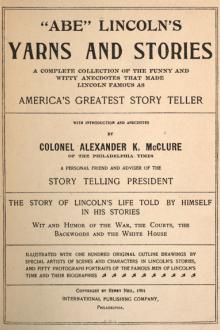A Short History of the World, H. G. Wells [beach books .TXT] 📗

- Author: H. G. Wells
- Performer: -
Book online «A Short History of the World, H. G. Wells [beach books .TXT] 📗». Author H. G. Wells
There were few changes in the world in those days; men’s days were sunny, toilsome and conventional. Few strangers came into the land and such as did fared uncomfortably. The priest directed life according to immemorial rules and watched the stars for seed time and marked the omens of the sacrifices and interpreted the warnings of dreams. Men worked and loved and died, not unhappily, forgetful of the savage past of their race and heedless of its future. Sometimes the ruler was benign. Such was Pepi II, who reigned in Egypt for ninety years. Sometimes he was ambitious and took men’s sons to be soldiers and sent them against neighbouring city states to war and plunder, or he made them toil to build great buildings. Such were Cheops and Chephren and Mycerinus, who built those vast sepulchral piles, the pyramids at Gizeh. The largest of these is 450 feet high and the weight of stone in it is 4,883,000 tons. All this was brought down the Nile in boats and lugged into place chiefly by human muscle. Its erection must have exhausted Egypt more than a great war would have done.
IT was not only in Mesopotamia and the Nile Valley that men were settling down to agriculture and the formation of city states in the centuries between 6000 and 8000 B.C. Wherever there were possibilities of irrigation and a steady all-the-year-round food supply men were exchanging the uncertainties and hardships of hunting and wandering for the routines of settlement. On the upper Tigris a people called the Assyrians were founding cities; in the valleys of Asia Minor and on the Mediterranean shores and islands, there were small communities growing up to civilization. Possibly parallel developments of human life were already going on in favourable regions of India, and China. In many parts of Europe where there were lakes well stocked with fish, little communities of men had long settled in dwellings built on piles over the water, and were eking out agriculture by fishing and hunting. But over much larger areas of the old world no such settlement was possible. The land was too harsh, too thickly wooded or too arid, or the seasons too uncertain for mankind, with only the implements and science of that age to take root.
For settlement under the conditions of the primitive civilizations men needed a constant water supply and warmth and sunshine. Where these needs were not satisfied, man could live as a transient, as a hunter following his game, as a herdsman following the seasonal grass, but he could not settle. The transition from the hunting to the herding life may have been very gradual. From following herds of wild cattle or (in Asia) wild horses, men may have come to an idea of property in them, have learnt to pen them into valleys, have fought for them against wolves, wild dogs and other predatory beasts.
Brit. Mus.
These Borneo dwellings are practically counterparts of the homes of European neolithic communities 6000 B.C.
So while the primitive civilizations of the cultivators were growing up chiefly in the great river valleys, a different way of living, the nomadic life, a life in constant movement to and fro from winter pasture to summer pasture, was also growing up. The nomadic peoples were on the whole hardier than the agriculturalists; they were less prolific and numerous, they had no permanent temples and no highly organized priesthood; they had less gear; but the reader must not suppose that theirs was necessarily a less highly developed way of living on that account. In many ways this free life was a fuller life than that of the tillers of the soil. The individual was more self-reliant; less of a unit in a crowd. The leader was more important; the medicine man perhaps less so.
Egyptian wall painting in a tomb near ancient Beni Hassan, middle Egypt. It depicts the arrival of a tribe of Semitic Nomads in Egypt about the year of 1895 B.C.
Moving over large stretches of country the nomad took a wider view of life. He touched on the confines of this settled land and that. He was used to the sight of strange faces. He had to scheme and treat for pasture with competing tribes. He knew more of minerals than the folk upon the plough lands because he went over mountain passes and into rocky places. He may have been a better metallurgist. Possibly bronze and much more probably iron smelting were nomadic discoveries. Some of the earliest implements of iron reduced from its ores have been found in Central Europe far away from the early civilizations.
Excavated 1922 by the British School of Archæology in Egypt from First Dynasty Tombs
On the other hand the settled folk had their textiles and their pottery and made many desirable things. It was inevitable that as the two sorts of life, the agricultural and the nomadic differentiated, a certain amount of looting and trading should develop between the two. In Sumeria particularly which had deserts and seasonal country on either hand it must have been usual to have the nomads camping close to the cultivated fields, trading and stealing and perhaps tinkering, as gipsies do to this day. (But hens they would not steal, because the domestic fowl—an Indian jungle fowl originally was not domesticated by man until about 1000 B.C.) They would bring precious stones and things of metal and leather. If they were hunters they would bring skins. They would get in exchange pottery and beads and glass, garments and suchlike manufactured things.
From an ancient and curiously painted model in the British Museum
Three main regions and three main kinds of wandering and imperfectly settled people there were in those remote days of the first civilizations in Sumeria and early Egypt. Away in the forests of Europe were the blonde Nordic peoples, hunters and herdsmen, a lowly race. The primitive civilizations saw very little of this race before 1500 B.C. Away on the steppes of eastern Asia various Mongolian tribes, the Hunnish peoples, were domesticating the horse and developing a very wide sweeping habit of seasonal movement between their summer and winter camping places. Possibly the Nordic and Hunnish peoples were still separated from one another by the swamps of Russia and the greater Caspian Sea of that time. For very much of Russia there was swamp and lake. In the deserts, which were growing more arid now, of Syria and Arabia, tribes of a dark white or brownish people, the Semitic tribes, were driving flocks of sheep and goats and asses from pasture to pasture. It was these Semitic shepherds and certain more negroid people from southern Persia, the Elamites, who were the first nomads to come into close contact with the early civilizations. They came as traders and as raiders. Finally there arose leaders among them with bolder imaginations, and they became conquerors.
This monarch, son of Sargon I, was a great architecht as well as a famous conqueror. Discovered in 1898 among the ruins of Susa, Persia
About 2750 B.C. a great Semitic leader, Sargon, had conquered the whole Sumerian land and was master of all the world from the Persian Gulf to the Mediterranean Sea. He was an illiterate barbarian and his people, the Akkadians, learnt the Sumerian writing and adopted the Sumerian language as the speech of the officials and the learned. The empire he founded decayed after two centuries, and after one inundation of Elamites a fresh Semitic people, the Amorites, by degrees established their rule over Sumeria. They made their capital in what had hitherto been a small up-river town, Babylon, and their empire is called the first Babylonian Empire. It was consolidated by a great king called Hammurabi (circa 2100 B.C.) who made the earliest code of laws yet known to history.
The narrow valley of the Nile lies less open to nomadic invasion than Mesopotamia, but about the time of Hammurabi occurred a successful Semitic invasion of Egypt and a line of Pharaohs was set up, the Hyksos or “shepherd kings,” which lasted for several centuries. These Semitic conquerors never assimilated themselves with the Egyptians; they were always regarded with hostility as foreigners and barbarians; and they were at last expelled by a popular uprising about 1600 B.C.
But the Semites had come into Sumeria for good and all, the two races assimilated and the Babylonian Empire became Semitic in its language and character.
THE earliest boats and ships must have come into use some twenty-five or thirty thousand years ago. Man was probably paddling about on the water with a log of wood or an inflated skin to assist him, at latest in the beginnings of the Neolithic period. A basketwork boat covered with skin and caulked was used in Egypt and Sumeria from the beginnings of our knowledge. Such boats are still used there. They are used to this day in Ireland and Wales and in Alaska; sealskin boats still make the crossing of Behring Straits. The hollow log followed as tools improved. The building of boats and then ships came in a natural succession.
Perhaps the legend of Noah’s Ark preserves the memory of some early exploit in shipbuilding, just as the story of the Flood, so widely distributed among the peoples of the world, may be the tradition of the flooding of the Mediterranean basin.
There were ships upon the Red Sea long before the pyramids were built, and there were ships on the Mediterranean and Persian Gulf by 7000 B.C. Mostly these were the ships of fishermen, but some were already trading and pirate ships—for knowing what we do of mankind we may guess pretty safely that the first sailors plundered where they could and traded where they had to do so.
The seas on which these first ships adventured were inland seas on which the wind blew fitfully and which were often at a dead calm for days together, so that sailing did not develop beyond an accessory use. It is only in the last four hundred years that the well-rigged, ocean-going, sailing ship has developed. The ships of the ancient world were essentially rowing ships which hugged the shore and went into harbour at the first sign of rough weather. As ships grew into big galleys they caused a demand for war captives as galley slaves.
We have already noted the appearance of the Semitic people as wanderers and nomads in the region of Syria and Arabia, and how they conquered Sumeria and set up first the Akkadian and then the first Babylonian Empire. In the west these same Semitic peoples were taking to the sea. They set up a string of harbour towns along the Eastern coast of the Mediterranean, of which Tyre and Sidon were the chief; and by the time of Hammurabi in Babylon, they had spread as traders, wanderers and colonizers over the whole Mediterranean basin. These sea Semites were called the Phœnicians, They settled largely in Spain, pushing back the old Iberian Basque population and sending coasting expeditions through the straits of Gibraltar; and they set up colonies upon the north coast of Africa. Of Carthage, one of these Phœnician cities, we shall have





Comments (0)